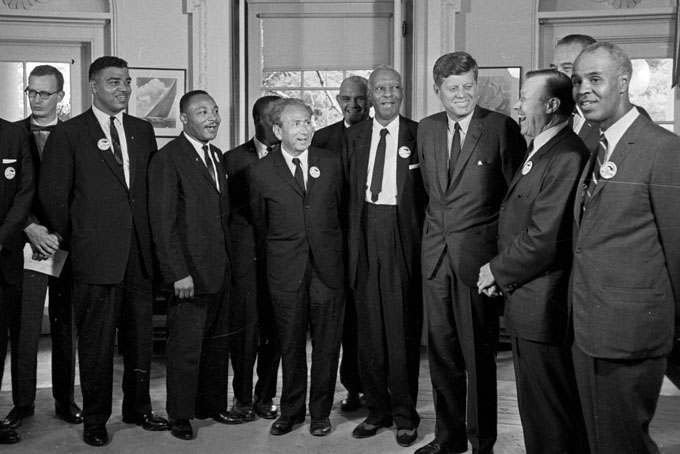
DALLAS (AP) — Fifty years after John F. Kennedy fell victim to an assassin’s bullet while visiting Texas with his wife, people at home and abroad paused Friday to remember the 35th president of the United States. Collected here are memories of the slain president, details from the day of his death and live updates from the memorial service at Dealey Plaza in Dallas.
___
HOW THE KENNEDY FAMILY REMEMBERED
President John F. Kennedy’s daughter Caroline Kennedy, who is now the U.S. ambassador to Japan commemorated the anniversary of her father’s death privately, the U.S. Embassy press office said. They didn’t offer further details.
In Arlington, Va., the only surviving sibling of JFK, 85-year-old Jean Kennedy Smith, laid a wreath at her brother’s grave. She was accompanied by 10 Kennedy family members, who then prayed and left roses on the grave before leaving quietly.
— Reported by Yuri Kageyama in Tokyo and Matthew Barakat in Arlington, Va.
___
THE NATION’S FULL ATTENTION
It’s been estimated that 41.5 million households in America tuned in to watch a horse named Black Jack — saddle empty, boots backwards in the stirrups — follow Kennedy’s body through Washington to his final resting place at Arlington National Cemetery during the funeral on Nov. 25, 1963.
At the time, only 50.3 million households had televisions.
— Reported by Jerry Schwartz in New York.
___
‘IT BRINGS BACK SOME REALLY BAD MEMORIES’
Visiting Arlington National Cemetery is not an easy task for Wallace Johnson, 74, of Dumfries, Va.
So many of the Special Forces veteran’s comrades are buried here. So is his wife, who died in 2009.
“It brings back some really bad memories,” he said, fighting back tears.
On Friday, though, he joined two other members of the Special Forces Association to pay their respects at Kennedy’s grave, walking up the hill to where an eternal flame keeps vigil over the grave site.
Wallace said Kennedy holds a special place in the hearts of Special Forces members, noting that Kennedy gave his instant approval to the group’s iconic green beret on a 1961 visit to Fort Bragg.
“He authorized that headgear right on the spot,” Johnson said.
Wallace was a young lieutenant in 1963 when Kennedy died. He remembers being at the Officers’ Annex at Fort Benning, Ga., when he heard Kennedy had been shot.
“I said, ‘That doesn’t happen here.’ I was in disbelief, even when I saw it on the news,” Wallace said.
On Friday, Wallace and his Special Forces comrades left a Green Beret at Kennedy’s grave and walked away.
— Reported by Matthew Barakat in Arlington, Va.
___
FINAL RESTING PLACES, PUBLIC AND PRIVATE
Perhaps the most famous grave in the United States is Kennedy’s, marked by an eternal flame at Arlington National Cemetery outside Washington. Initially a propane-fed torch provided by the Washington Gas Company, it was lit by Jacqueline Kennedy and Robert F. Kennedy during JFK’s funeral on Nov. 25, 1963.
More than 3,000 people per hour visited Kennedy’s first grave site, surrounded by a white picket fence, in the year after his death, according to Arlington National Cemetery. An estimated 50,000 people came on weekends and more than 16 million people in all paid their respects in the three years after his assassination.
The crowds led to the construction of a permanent grave that was completed in 1967.
The eternal flame is powered by natural gas and a constantly flashing electric spark to ensure it remains lit. The burner was renovated earlier this year, and during that process, the flame continued to flicker at a temporary location kept visible to the public.
Lee Harvey Oswald, Kennedy’s assassin, is buried at Shannon Rose Hill Cemetery in Fort Worth, Texas. Per his family’s request, the cemetery doesn’t supply directions to the gravesite nor allow photos or video of his grave.
— Reported by David Scott in Chicago.